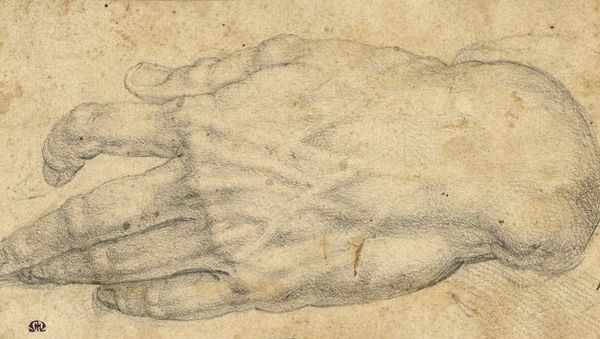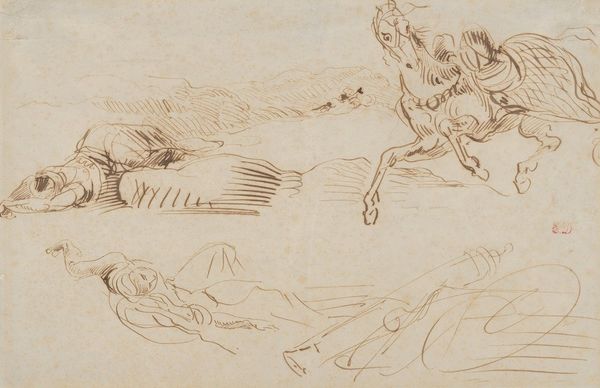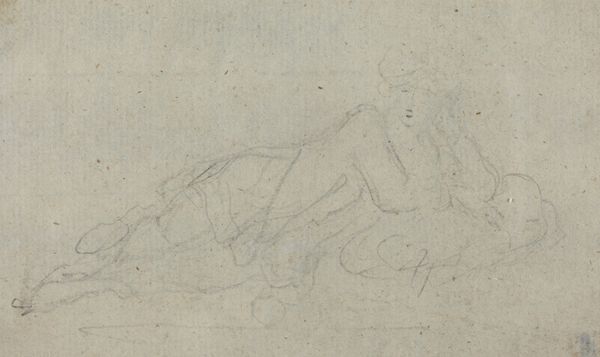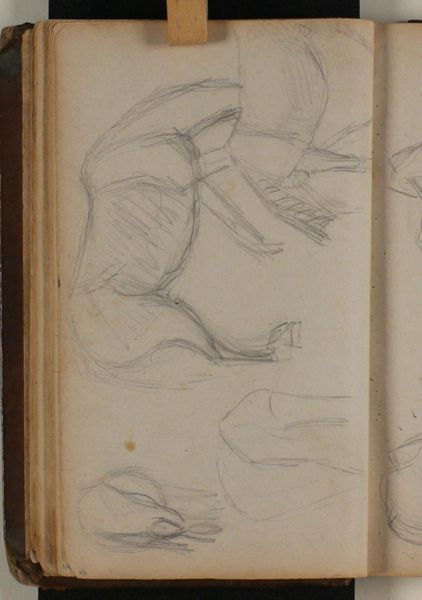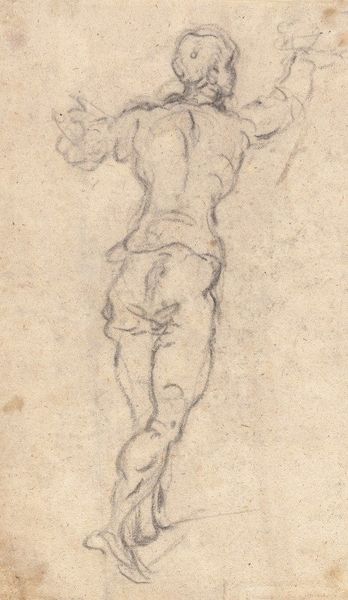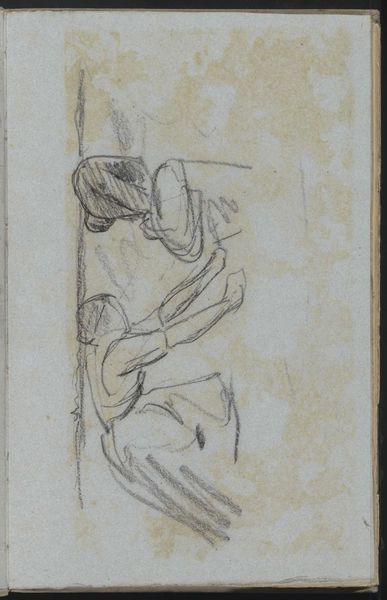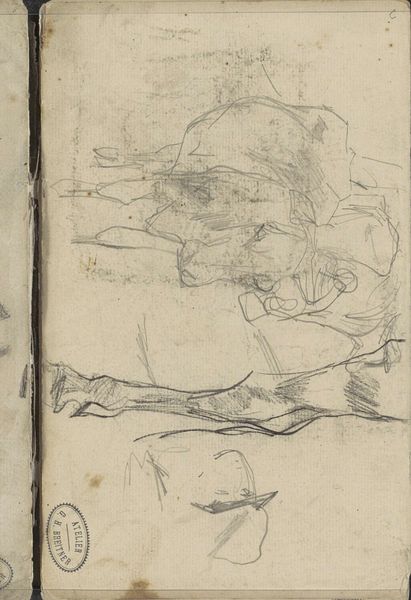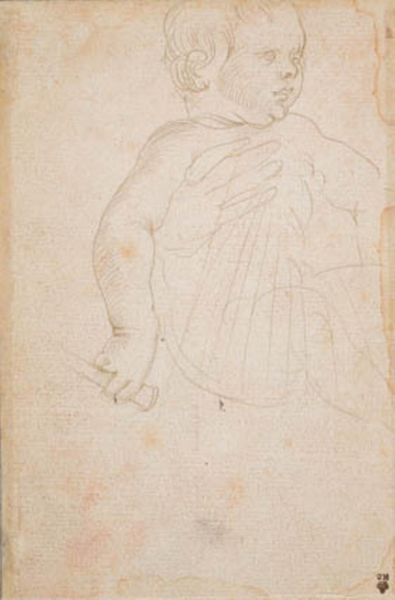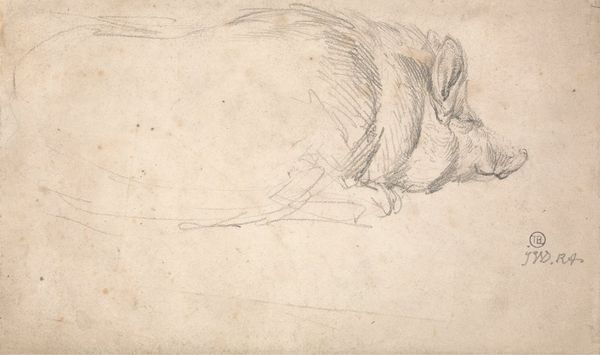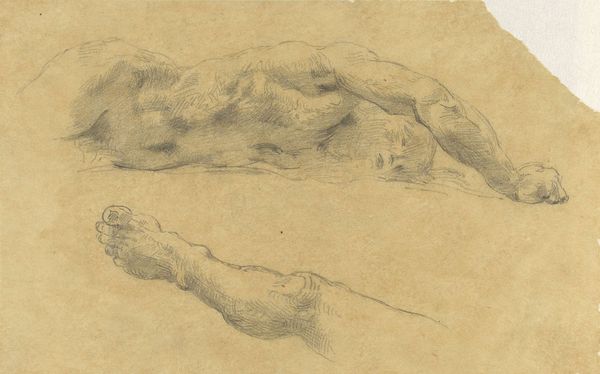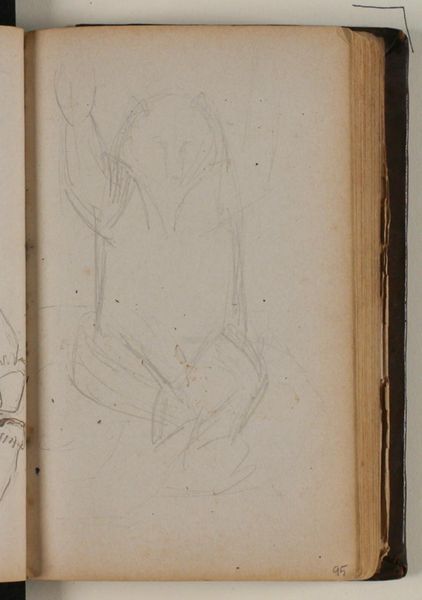
drawing
#
drawing
#
amateur sketch
#
toned paper
#
light pencil work
#
pencil sketch
#
incomplete sketchy
#
charcoal drawing
#
possibly oil pastel
#
charcoal art
#
underpainting
#
watercolor
Copyright: Public Domain: Artvee
Jean Auguste Dominique Ingres made this drawing, called "Etude d’homme prosterné," with graphite. As an "étude," or study, this work gives us a glimpse into the academic tradition of the time. Ingres was dedicated to Neoclassicism, which looked back to ancient Greece and Rome for its ideals. In post-revolutionary France, this aesthetic was heavily promoted in the École des Beaux-Arts, where Ingres taught. Emphasis was placed on draftsmanship, and the human body was seen as the pinnacle of artistic achievement. The art academy played a crucial role in shaping artistic careers, and Ingres's work reflects the values and expectations of this institution. He became a leader of academic art, but his conservative style was challenged by emerging movements like Romanticism. By studying Ingres's drawings and paintings alongside records of the École des Beaux-Arts, we can better understand the complex social and institutional forces that shaped the art world of 19th-century France.
Comments
No comments
Be the first to comment and join the conversation on the ultimate creative platform.
